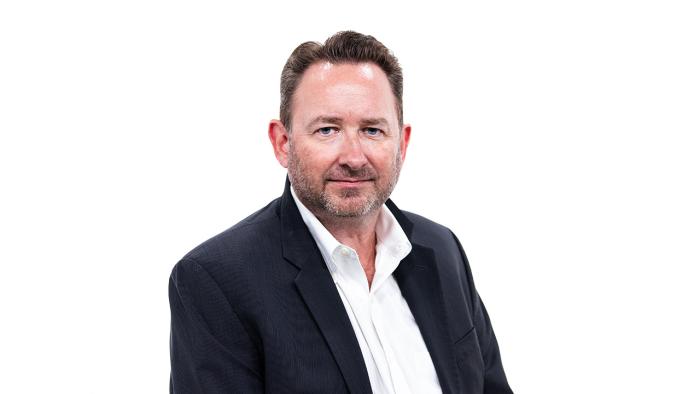Sean Aday

Sean Aday
Associate Professor of Media and Public Affairs
Contact:
Sean Aday joined George Washington University's School of Media and Public Affairs in 2000, after completing his Ph.D. and a post-doctoral fellowship at the Annenberg School for Communication at the University of Pennsylvania. His work focuses on the intersection of the press, politics and public opinion, especially in relation to war, foreign policy, and public diplomacy.
Dr. Aday has published widely on subjects ranging from the effects of watching local television news, to coverage of American politics, and media coverage of the wars in Iraq and Afghanistan. He has been involved in global media and government capacity training projects, including work in Iraq and Afghanistan during the wars there in 2009 and 2010. He has been a frequent commentator in the press on news coverage of elections, crime, and war.
For seven years, Dr. Aday directed GW’s Institute for Public Diplomacy and Global Communication and its Global Communication M.A. program. For the last several years he has been the Director of the SMPA M.A. Program in Strategic Communication.
Dr. Aday has been the principal investigator on several grants, including most recently one from the Hewlett Foundation to study media coverage of cyber security issues from 2017-2023. Before that, he was a co-PI on the multi-year "Blogs and Bullets" research program funded by the U.S. Institute of Peace, which produced numerous articles and reports analyzing digital and social media in social movements and conflicts ranging from the Arab Spring to the Syrian civil war. Prior to that, he, along with two colleagues, conducted a series of surveys about Americans' attitudes about government and media following the September 11th terrorist attacks. Aday was also the principal investigator for DC Student Voices, a curriculum-based project in Washington D.C. high schools that aimed to get students more involved in politics.
He is a recipient of SMPA’s Robert and Christine Staub Faculty Excellence Award, given for outstanding achievement in teaching, effectiveness in advising and mentoring or service roles outside the classroom.
Before entering academia, Dr. Aday served as a general assignment reporter for The Kansas City Star, the Milwaukee Journal Sentinel, and The Greenville News (South Carolina). He graduated from the Medill School of Journalism at Northwestern University in 1990.
SMPA 1050, Media in a Free Society
SMPA 3194, Media and War
SMPA 3472, Media and Foreign Policy
SMPA 2102, Introduction to Political Communication
Journal Articles
Aday, Sean. (In Press.) Love Bombs and Twitter Terror: Emotion and Affect in Terrorist Websites and other Online Media. In Robin Nabi & Jess Myrick, Eds., Our Online Emotional Selves: The Link Between Digital Media and Emotional Experience. New York: Oxford University Press.
Aday, Sean. (In press). The Myth of a Thousand Westerns: Media and Just War Theory. In Sarah Maltby, Ben O’Loughlin, Katy Parry, & Laura Roselle, Eds., Spaces of War: War of Spaces. London: Bloomsbury Academic, 123-142.
Aday, Sean. (2019). Media, War, and Foreign Policy. In William R. Thompson, Ed., Oxford Research Encyclopedia of Politics. Oxford University Press. doi:10.1093/acrefore/9780190228637.013.44.
“Virtual Violence: Understanding the Potential Power of ISIS’ Violent Videos to Buttress Strategic Narratives and Persuade Foreign Recruits.” Sean Aday (2019). In Corneliu Bjola and James Pamment (Eds.): Countering Online Propaganda and Violent Extremism: The Dark Side of Digital Diplomacy, 140-156.
“Online Clustering, Fear, and Uncertainty in Egypt’s Transition.” Marc Lynch, Deen Freelon, and Sean Aday (2017). Democratization, 24(6): 1159-1177.
“Online Self-Segregation in Wartime: A Longitudinal Network Analysis of Tweets About Syria, 2011-2013.” Marc Lynch, Deen Freelon, Sean Aday. (2015). Annals of the American Academy of Political and Social Science, v659(1): 166-179.
“Syria in the Arab Spring: The Integration of Syria’s Conflict with the Arab Uprisings.” Marc Lynch, Deen Freelon, and Sean Aday (2014). Research and Politics, 1(3).
“Watching From Afar: Media Consumption Patterns Around the Arab Spring.” Sean Aday, Henry Farrell, Deen Freelon, Marc Lynch, and John Sides (2013). American Behavioral Scientist, 57(7), pp. 899-919.
“Chasing the Bad News: An Analysis of 2005 Iraq and Afghanistan War Coverage on NBC and Fox News Channel.” Sean Aday (2010). Journal of Communication, 60(1), pp. 144-164.
“Leading the Charge: Media, Elite Cues, and Emotion in Public Support for War.” Sean Aday (2010). Journal of Communication, 60(3), pp. 440-465.
“Condemned to Repeat: The Media and the Accountability Gap in Iraq War Policy.” Robert Entman, Steve Livingston, & Sean Aday (2010). In Sigrid Koch-Baumgarten and Katrin Voltmer (Eds.): Public Policy and the Medie: The Interplay of Mass Communication and Political Decision Making, London: Routledge.
“The Framesetting Effects of News: An Experimental Test of Advocacy versus Objectivist Frames.” Sean Aday (2007). Journalism and Mass Communication Quarterly 83(4), 767-784.
“As Goes the Statue, So Goes the War: The Emergence of the Victory Frame in Television Coverage of the Iraq War.” Sean Aday, John Cluverius and Steven Livingston. (2005.) Journal of Broadcasting and Electronic Media, 49(3), 314-331.
“Embedding the Truth: A Cross-Cultural Analysis of Objectivity and Television Coverage of the Iraq War.” Sean Aday, Steven Livingston and Maeve Hebert. (2005). Harvard International Journal of Press/Politics, 10(1), 3-21.
“A Panel Study of Media Effects on Political and Social Trust After September 11th.” Kim Gross, Sean Aday, and Paul Brewer. (2004). Harvard International Journal of Press/Politics, 9(4), 49-74.
“International Trust and Public Opinion About World Affairs.” Paul Brewer, Kim Gross, Sean Aday, and Lars Willnat. (2004). American Journal of Political Science, 48(1), 93-110.
Ph.D., The Annenberg School for Communication, University of Pennsylvania, 1999
M.A., The Annenberg School for Communication, University of Pennsylvania, 1995
B.S.J., The Medill School of Journalism, Northwestern University, 1990

